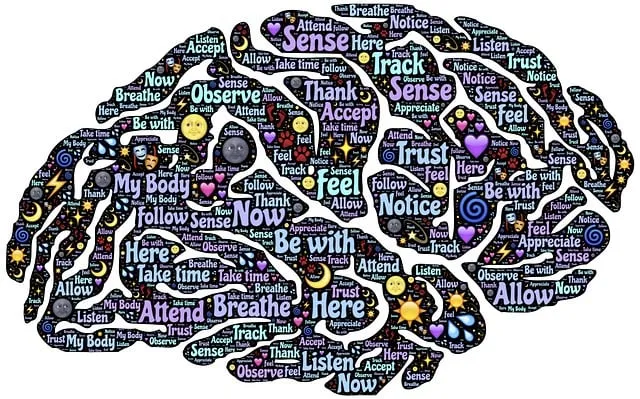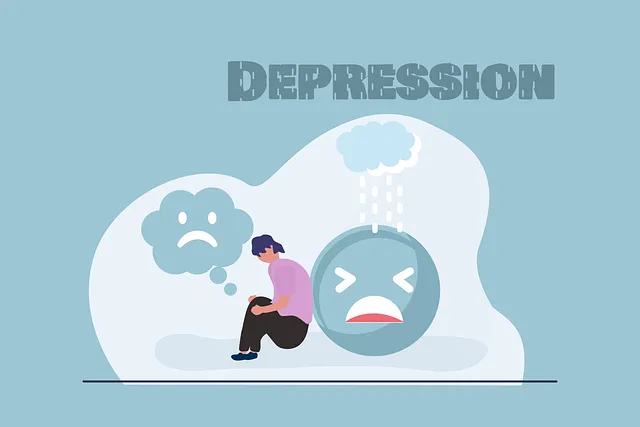The Colorado Springs Kaiser Permanente mental health facility employs a comprehensive evaluation strategy, combining quantitative data from standardized tools and qualitative insights from patient interviews and focus groups. This dual approach ensures programs like emotional intelligence workshops cater to individual needs, with key performance indicators (KPIs) including reduced wait times and improved client retention. Continuous learning through feedback and initiatives like the Community Outreach Program drives program refinement, enhancing mental wellness services for diverse populations.
At the Colorado Springs Kaiser Permanente mental health facility, a robust evaluation process is paramount to ensuring effective patient care. This article delves into the multifaceted approach used to assess mental wellness programs, exploring both qualitative and quantitative methods. We examine the role of stakeholder involvement in shaping program evaluations and highlight strategies for measuring success and driving continuous improvement. By learning from the Colorado Springs model, mental health facilities can optimize their services for better patient outcomes.
- Understanding the Evaluation Process at Colorado Springs Kaiser Permanente Mental Health Facility
- Qualitative Assessment Methods for Mental Wellness Programs
- Quantitative Data Collection and Analysis Techniques
- Stakeholder Involvement in Program Evaluation
- Measuring Success and Continuous Improvement Strategies
Understanding the Evaluation Process at Colorado Springs Kaiser Permanente Mental Health Facility

At Colorado Springs Kaiser Permanente mental health facility, the evaluation process is meticulously designed to measure the effectiveness and impact of their wellness programs. This involves a multi-faceted approach that combines quantitative and qualitative methods, allowing for a comprehensive understanding of each patient’s journey. Initially, healthcare professionals assess clients through standardized tools and questionnaires tailored to specific program goals, such as tracking changes in self-esteem improvement and emotional intelligence.
Through these assessments, the facility aims to gauge progress in coping skills development and identify areas requiring further attention. Additionally, one-on-one interviews and focus groups provide deeper insights into patients’ experiences, challenges faced, and perceived benefits. This dual method—quantitative data analysis alongside qualitative feedback—enables Colorado Springs Kaiser Permanente to refine their programs, ensuring they meet the unique needs of every individual.
Qualitative Assessment Methods for Mental Wellness Programs

Qualitative Assessment Methods play a crucial role in evaluating mental wellness programs, offering valuable insights into participants’ experiences and perceptions. At the Colorado Springs Kaiser Permanente mental health facility, researchers often employ techniques like in-depth interviews and focus groups to gather rich, descriptive data. These methods allow individuals to share their personal stories, reflecting on the impact of self-care practices, mindfulness meditation, and Mind Over Matter principles within the program.
Through open-ended questions, participants can elaborate on their emotional journeys, the effectiveness of therapeutic approaches, and any challenges faced during their mental wellness journey. This qualitative data provides a nuanced understanding of individual progress and helps identify areas for improvement within the program structure or intervention strategies.
Quantitative Data Collection and Analysis Techniques

The evaluation of mental wellness programs at facilities like the Colorado Springs Kaiser Permanente mental health facility relies heavily on quantitative data collection and analysis techniques. These methods involve systematically gathering numerical or categorical data to measure program effectiveness. Surveys, questionnaires, and standardized assessments are common tools used to gauge participant experiences, symptom reductions, and overall improvements in mental health status. For instance, researchers might employ the Risk Assessment for Mental Health Professionals to identify and mitigate risks within the treatment environment, ensuring safety and efficacy.
Quantitative data analysis techniques, such as statistical tests and predictive modeling, play a crucial role in interpreting results. By analyzing trends and correlations, mental wellness coaches and program developers can refine interventions, incorporating effective strategies like Empathy Building Strategies into the Mental Wellness Coaching Programs Development. This iterative process ensures that the program remains responsive to the evolving needs of individuals seeking support at the Colorado Springs Kaiser Permanente facility.
Stakeholder Involvement in Program Evaluation

The success of any mental wellness program heavily relies on stakeholder involvement during evaluation. At Colorado Springs Kaiser Permanente mental health facility, this collaborative approach ensures tailored interventions that address diverse needs. Engaging a multifaceted group comprising patients, healthcare professionals, and community leaders provides a holistic perspective, crucial for evaluating programs like emotional intelligence workshops or self-esteem improvement initiatives. By incorporating feedback from all stakeholders, the facility can measure the impact on both individual well-being and broader community health, including depression prevention strategies.
This inclusive evaluation method allows for continuous program enhancement. For instance, patient insights might reveal aspects of self-care practices that need further integration into existing therapy models. Similarly, healthcare providers’ perspectives could highlight areas where emotional intelligence training positively influences patient interactions. Such feedback loops foster a dynamic environment conducive to innovation and growth, ultimately refining mental health care services at Colorado Springs Kaiser Permanente.
Measuring Success and Continuous Improvement Strategies

Evaluating the success of a mental wellness program is an ongoing process that goes beyond simple satisfaction surveys. At the Colorado Springs Kaiser Permanente mental health facility, we employ a multi-faceted approach to measure improvements in client outcomes and overall program effectiveness. This includes tracking key performance indicators (KPIs) such as reduced wait times, increased access to services, and improved client retention rates. Additionally, regular feedback from both clients and staff is invaluable for identifying areas of strength and weakness.
Continuous improvement strategies are integral to our mental wellness program evaluation methods. We foster a culture of learning and adaptation by implementing the Community Outreach Program, which enhances our ability to reach underserved populations. Moreover, prioritizing burnout prevention through regular staff training and supporting trauma-informed care ensures that our services remain resilient and responsive to the evolving needs of our community. These strategies, coupled with rigorous data analysis, enable us to refine and optimize our programs, ultimately enhancing the well-being of those we serve at the Colorado Springs Kaiser Permanente facility.
The evaluation of mental wellness programs, as exemplified by the practices at Colorado Springs Kaiser Permanente Mental Health Facility, is a multifaceted process that combines qualitative and quantitative methods. By integrating stakeholder involvement, these methods provide a comprehensive view of program effectiveness. Qualitative assessments capture nuanced insights from participants’ perspectives, while quantitative data offers measurable outcomes. This dual approach ensures that improvements are both informed and evidence-based, ultimately enhancing the success and sustainability of mental health initiatives at Colorado Springs Kaiser Permanente and beyond.






